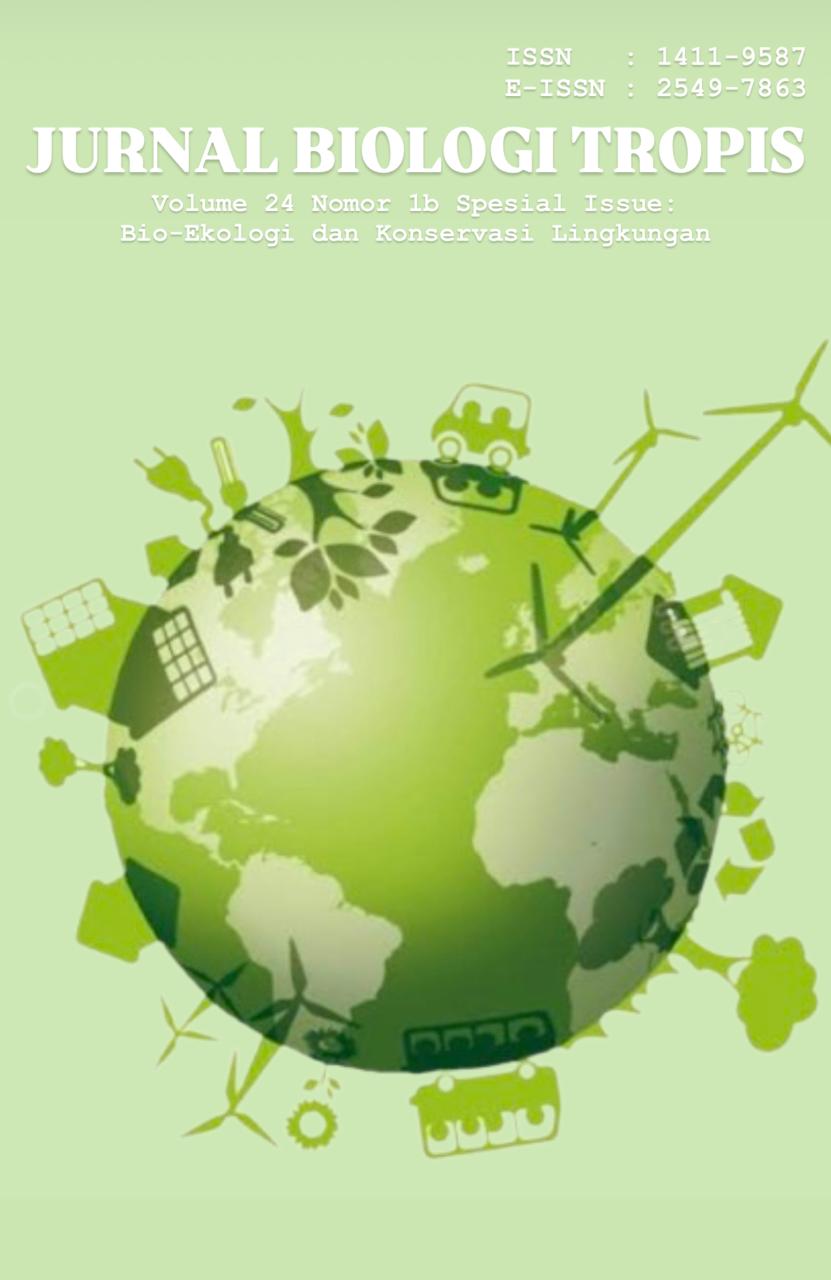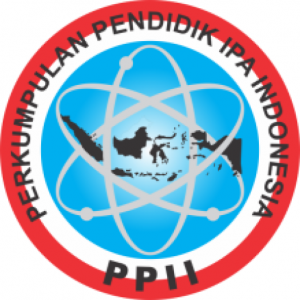Nokturnal of Mosquito Spesies in Sukawana, Curug District, Serang City, Banten
Authors
Riski Andrian Jasmi , Hanin Irfathin Ardani , Hafaz Arif , Kholisotun Najwa , Najmah Fairuz Zahira , Azeng Nurul Hikmah , Royatul Atfaliyah , Juliyanti Juliyanti , Gading Utoro BambangDOI:
10.29303/jbt.v24i2b.8036Published:
2024-12-31Issue:
Vol. 24 No. 2b (2024): Special IssueKeywords:
mosquite; vector; Serang; nocturnal.Articles
Downloads
How to Cite
Downloads
Metrics
Abstract
Mosquitoes are members of the Culicidae family which act as vectors. Mosquitoes usually live in tropical environments, including Indonesia. This research aims to identify types of nocturnal mosquitoes in Sukawana, Serang City. The mosquito catching method is carried out using a sweeping technique at each period, then the mosquitoes caught are taken using a special aspirator. The proportion of mosquitoes most commonly found was Culex quinquefasciatus at 51 individuals (51%). Culex Fuscocephala as many as 31 individuals (31%), Culex perexiguus as many as 16 individuals (16%), and Aedes albopictus as many as 2 individuals (2%). This research provides important information regarding the presence of mosquito species in Sukawana, which can be used as initial data for efforts to control diseases transmitted by mosquitoes.
References
Agustin I, Tarwotjo U, Rahadian R. (2017) Perilaku Bertelur dan Siklus Hidup Aedes aegypti pada Berbagai Media Air. J Biol, 6(4):71–81. https://ejournal3.undip.ac.id/index.php/biologi/article/view/19610.
Amarasinghe, L. D., & Weerakkodi, W. G. (2014). Density and diversity of mosquito larvae associated with rice field and marshland habitats in two climatically different areas in Sri Lanka. International Journal of Entomological Research, 2(2), 59-71. https://www.journals.esciencepress.net/index.php/IJER/article/view/629.
Anindita R., & Sudrajat NAD. (2022). Kepadatan Populasi Jentik Aedes sp. Di Desa Karangsatria Kecamatan Tambun Utara Kabupaten Bekasi. Jurnal Penelitian Penyakit Tular Vektor. 14(2): 79-88. https://doi.org/10.58623/aspirator.v14i2.10.
BPS. (2020). Kota Serang Dalam Angka 2020. Kota Serang: Badan Pusat Statistik.
Capinera JL. (2008). Encyclopedia of Entomology. 2nd ed. Heidelberg: Springer.
Cindy C. D. Warsoridjo, Ricky C. Sondakh, & Woodford B. S. Joseph. (2017). Survei Bionomik Nyamuk Culex Spp Dewasa di Wilayah Kecamatan Paal Dua Kota Manado. Jurnal Kesehatan Masyarakat Universitas Samratulangi, 6(3): 1-9. https://ejournal.unsrat.ac.id/v3/index.php/kesmas/article/view/23037.
Dalilah, D., Apriliani, F. A., Prasasty, G. D., Handayani, D., Susilawati, S., & Pahlepi, R. I. (2022). Keragaman Spesies Nyamuk di Dusun Sukoharjo, Desa Bayung Lencir, Kabupaten Musi Banyuasin. Jurnal Kedokteran dan Kesehatan: Publikasi Ilmiah Fakultas Kedokteran Universitas Sriwijaya, 9(1), 109-116. https://doi.org/10.32539/JKK.V9I1.16539
Ghofur, A., Hadisaputro, S., Sayono, S., & Gumilar, A. G. (2024). Keanekaragaman, Kelimpahan Nisbi, Frekuensi dan Dominansi pada Nyamuk di Daerah Endemis Filariasis Kota Pekalongan Jawa Tengah. Jurnal Kesehatan Lingkungan Indonesia, 23(3), 334-340. https://doi.org/10.14710/jkli.23.3.334-340.
Ginanjar, R.A. (2011). Densitas dan Perilaku Nyamuk (Diptera: Culicidae) di Desa Bojong Rangkas Kabupaten Bogor [skripsi]. Bogor. Institut Pertanian Bogor.
Goselle ON, Amobi LO, Ojile JO, David A, Nanvyat N, & Adulugba IA. (2017). Abundance of Mosquitoes Larvae in Various Microhabitats and the Concern for Invasion of Human Community. Int J Mosq Res, 4(4):119–125. http://hdl.handle.net/123456789/2220.
Hadi UK & Koesharto FX. (2006). Nyamuk dalam Hama Permukiman Indonesia: Pengenalan Biologi dan Pengendalian. Bogor: Unit Kajian Pengendalian Hama Permukiman.
Hasyimi, M., Harmany, N., & Pangestu (2009). Tempat-tempat terkini yang disenangi Metode PCR di Kabupaten Tanjung Jabung Timur, ASPIRATOR, 7(1): 29–35. https://doi.org/10.33019/ekotonia.v7i1.3139.
Hestiningsih R., Syahputra GR., Martini M., & Yuliawati S. (2021). Aktivitas Nokturnal Aedes Sp. Vektor Demam Berdarah Dengue di Kota Semarang. Vektora J Vektor Dan Reserv Penyakit, 13(1): 27–34. https://doi.org/10.15294/higeia.v7i4.67113.
Iryani, K. (2011). Hubungan Anopheles barbirostris dengan malaria. Jurnal Matematika, Sains, dan Teknologi, 12(1), 18-29. https://jurnal.ut.ac.id/index.php/jmst/article/view/504.
Khairi, F. (2015). Pemanfaatan Ternak dalam Pegendalian Nyamuk Vektor Penyakit. [skripsi]. Bogor: IPB.
Lestari., Adrial, & Rasyid, R. (2016). Identifikasi Nyamuk Anopheles Sebagai Vektor Malaria dari Survei Larva di Kenagarian Sungai Pinang Kecamatan Koto XI Tarusan Kabupaten Pesisir Selatan. Jurnal Kesehatan Andalas, 5(3): 656 – 660. https://jurnal.fk.unand.ac.id/index.php/jka/article/viewFile/594/482.
Manik JR., Luma D., Kutani LF., Kailola J., & Boleu FI. (2020). Karakteristik Habitat Perkembangbiakan Aedes aegypti di Desa Gosoma Halmahera Utara, Indonesia. BIOSFER Jurnal Biologi dan Pendidikan Biologi, 5(1): 31-36. https://doi.org/10.23969/biosfer.v5i1.2385.
Maulidyah N, Jafriati, & Ardiyansyah RT. (2017). Gambaran Perilaku Masyarakat terhadap Keberadaan Jentik Aedes aegypti di Kelurahan Tobuuha Kecamatan Puuwatu Kota Kendari Tahun 2016. Jurnal Ilmu Mahasiswa Kesehatan Masyarakat, 2(6):1–8.
Naeseem S., Malik PD., & Munir T. (2016). Mosquito management. J Entomol Zool Stud, 4(5): 73 – 79. https://www.entomoljournal.com/archives/?year=2016&vol=4&issue=5&ArticleId=1173.
Ndione RD, Faye O, Ndiaye M, Dieye A., & Afoutou JM. (2007). Toxic effects of neem products (Azadirachta indica A. Juss) on Aedes aegypti Linnaeus 1762 larvae. In African Journal of Biotechnology, 6(24). https://doi.org /2846-2854.10.5897/AJB2007.000-2454.
Ningsih F, Zakaria IJ, & Hasmiwati (2016). The Microhabitat Preferences of Mosquito Genus Aedes (Diptera: Culicidae) in Padang, West Sumatra, Indonesia. Int J Mosq Res, 3(5):36–40. https://www.dipterajournal.com/archives/2016/3/5/A/3-4-15.
Oktarina R., Yahya SM., & Pahlevi I. (2014). Keanekaragaman spesies nyamuk di Desa Pementung Basuki dan Desa Tanjung Kemala Barat Kabupaten Ogan Kumering Ulu Timur. J SPIRAKEL, 6: 14-25. http://ejournal.litbang.depkes.go.id/index.php/spirakel/article/view/6124.
Paull SH., Horton DE., Ashfaq M., Rastogi D., Kramer LD., Diffenbaugh NS., & Kilpatrick AM. (2017). Drought and immunity determine the intensity of west nile virus epidemics and climate change impacts. Proceedings of the Royal Society B: Biological Sciences, 28 (4): 18. https://doi.org/10.1098/rspb.2016.2078.
Peter G., Jupp., & Harbach RE. (1990). Crossmating And Morphological Studies of Culex Neavei and Culex Perexiguus (Diptera: Culicidae) to Elucidate Their Taxonomic Status. J Mosquito Systematics, 22(1): 1-10. https://www.cabidigitallibrary.org/doi/full/10.5555/19900501414.
Purwatiningsih., Oktarianti R., Setiawan R., Agustin WT., & Mursyidah A. (2021). Keanekaragaman Jenis Nyamuk Yang Berpotensi Sebagai Vektor Penyakit (Diptera: Culicidae) di Taman Nasional Baluran, Indonesia. AL-KAUNIYAH Jurnal Biologi, 14(2): 184-194. https://doi.org/10.15408/kauniyah.v14i1.12918.
Putranto, N. T., Handoyo, W., & Sumanto, D. (2020). Keragaman dan Kepadatan Vektor Anopheles sp di Jatirejo Purworejo. Jurnal Kesehatan Masyarakat Indonesia, 15(2), 39-41. https://doi.org/10.26714/jkmi.15.2.2020.39-41.
Ramadhani T., & Yunianto B. (2009). Aktivitas menggigit nyamuk Culex quinquefasciatus di daerah endemis filariasis limfatik Kelurahan Pabean Kota Pekalongan Provinsi Jawa Tengah. Jurnal Aspirator, 1(1): 11-15. https://dx.doi.org/10.22435/aspirator.v1i1.2924.
Robin LVKS., Masyeni S., & Sintya E. (2023). Identifikasi Nyamuk Aedes aegypti dan Aedes albopictus pada Kejadian Luar Biasa Infeksi Chikungunya di Bali. Hang Tuah Medical Journal, 20(2): 122-131. https://doi.org/10.30649/htmj.v20i2.450
Sudeep AB. (2014). Culex gelidus: An emerging mosquito vector with potential to transmit multiple virus infections. J Vector Borne Dis, 51: 251-258. https://journals.lww.com/jvbd/fulltext/2014/51040/culex_gelidus__an_emerging_mosquito_vector_with.1.aspx.
Susanti, S. (2017). Hubungan Lingkungan Fisik dengan Keberadaan Jentik Aedes pada Area Bervegetasi Pohon Pisang. Unnes J Public Heal, 6(4):271–276. https://doi.org/10.15294/ujph.v6i4.15236.
Warsoridjo CCD., Sondakh RC., & Joseph WBS. (2017). Survei Bionomik Nyamuk Culex sp. Dewasa Di Wilayah Kecamatan Paal Dua Kota Manado. Jurnal Kesehatan Masyarakat Universitas Sam Ratulangi. 6(3): 1-9. https://ejournal.unsrat.ac.id/index.php/kesmas/article/view/23037.
World Health Organization (2020). Pictorial identification key of important disease vectors in the WHO South-East Asia Region. New Delhi, India: World Health Organization, Regional Office for South- East Asia.
License
Copyright (c) 2025 Riski Andrian Jasmi, Hanin Irfathin Ardani, Hafaz Arif, Kholisotun Najwa, Najmah Fairuz Zahira, Azeng Nurul Hikmah, Royatul Atfaliyah, Juliyanti Juliyanti, Gading Utoro Bambang

This work is licensed under a Creative Commons Attribution 4.0 International License.

Jurnal Biologi Tropis is licensed under a Creative Commons Attribution 4.0 International License.
The copyright of the received article shall be assigned to the author as the owner of the paper. The intended copyright includes the right to publish the article in various forms (including reprints). The journal maintains the publishing rights to the published articles.
Authors are permitted to disseminate published articles by sharing the link/DOI of the article at the journal. Authors are allowed to use their articles for any legal purposes deemed necessary without written permission from the journal with an acknowledgment of initial publication to this journal.


























